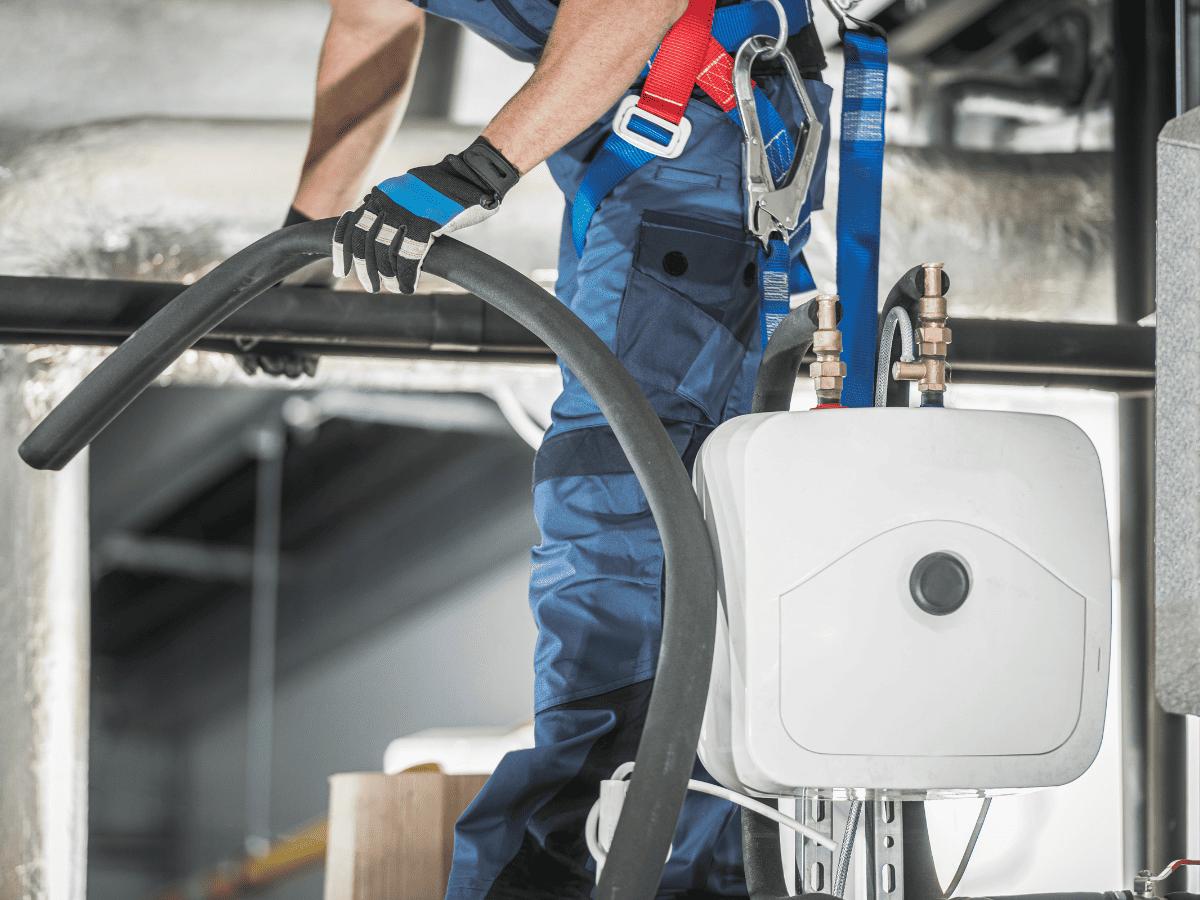As spring blossoms in Arizona, it’s the perfect time for home and property owners in Bullhead City to ensure their furnaces are prepared for the next chilly season.
While it might seem a little too early, this period not only promises warmer weather but also marks an opportune – and typically more economical – time to invest in a new HVAC system. Delaying could mean facing unexpected problems when you least want them and higher costs for installations.
Making a proactive decision now could save you from the inconvenience and discomfort of an untimely furnace replacement. Here is our list of eleven signs you should replace your current furnace system.
1. It’s getting up there in age
Generally, a furnace enjoys a hearty lifespan of 15 to 20 years, bringing warmth to your home and comfort to your family. Yet, as it ages beyond this, it’s wise to eye a replacement to sidestep sudden breakdowns and costly last-minute installations.
Starting your search early not only protects your home’s coziness but also allows for a more budget-friendly transition, ensuring you and your loved ones remain snug without unexpected expenses.
2. Your system doesn’t heat your home well
If your home feels chilly despite cranking up the thermostat, and this cold spell persists even thoroughly cleaning your unit, it’s likely a symptom of a larger issue.
A furnace that struggles to maintain temperature might be signaling it’s time for a replacement. Don’t wait until your cozy blanket becomes your only source of warmth; consider upgrading your heating system to ensure your home stays toasty when you need it the most.
3. Your energy bills are… scary.
Seeing a spike in your energy bills can be downright spooky, and it’s often a sign of an old or faltering furnace haunting your home’s efficiency.
With each creak and groan, it’s not just the furnace struggling—it’s also your wallet. Higher utility costs can sneak up when your system loses its fight with age and wear, gobbling up more energy to keep you warm.
Don’t wait for your budget to get spooked! Give us a call, and we can help fix those high prices with a new, efficient unit.
4. The airflow is weak
When your living room feels more like an icebox than a cozy retreat, it might not just be your imagination. Aging or faulty heating systems often struggle to push warm air through the ducts efficiently, leading to weaker airflow from the vents.
Even after you’ve done your due diligence—changing the air filter and checking for blockages—your furnace may still fail to distribute heat evenly across your home. This is often a sign that your trusty furnace might be ready for a well-earned retirement.
5. Your home’s air quality seen better days
Poor air quality in your home could be whispering that it’s time for a new furnace. When a furnace ages, it may struggle with proper ventilation and humidity regulation, turning your home environment from comfortable to a dust bowl with out-of-whack humidity levels.
Excessive dust or a home that feels too dry or humid indicates that your furnace isn’t keeping up. Don’t compromise on your comfort; a fresh furnace could clear the air and your worries.
6. Temperature is inconsistent and uneven
Arizona doesn’t get as cold as the northern states, but our winter is relatively chiller than the summertime. Living through the cold season with an aging or faulty furnace can lead to frustrating temperature inconsistencies in your home.
These older models may struggle with maintaining and distributing heat evenly, leaving you to find some rooms too warm and others too cold. Upgrading to a newer furnace promises advanced temperature control features that efficiently provide consistent warmth. By helping to evenly heat every corner of your home, a new furnace guarantees you comfort throughout the chilliest months.
7. Cycling issues: Too long or too short
Unusual cycling patterns in your furnace, whether too long or too short, could be a direct signal of an old, faulty, or incorrectly sized unit. A furnace that runs too briefly and shuts off, only to restart again shortly after, might not be adequately sized for your home, leading to rapid wear and ineffectiveness.
On the flip side, a unit that operates for extended periods without adequately heating your home can indicate inefficiency or failure. If your system does either of the two, contact one of our HVAC experts to assess, resize, and install a new furnace. We’ll help you achieve optimal efficiency and maintain a comfortable living space.
8. Frequent breakdowns and repair calls
If you’re in close contact with your HVAC technician about the same unit, it might be time to call it quits and get a new system.
Continuous breakdowns not only mean frequent inspections and replacements of components but may actually signal that maintaining your old unit is more costly than investing in a new one.
Service after service: If you find your unit’s health is on the decline, it might be time to say goodbye to costly repairs and welcome a new, efficient system.
9. Odd noises or smells from your unit
Furnaces often communicate their distress through odd noises or smells, indicating the need for immediate attention. If your unit is emitting strange sounds—such as banging, whistling, or rattling—it’s crucial to monitor it closely, as these could be symptoms of internal issues, ranging from minor to severe.
Similarly, unusual smells should never be ignored. These can signify a dangerous leak or other serious problems. While the severity of these two signs can vary, it’s important to remember that a properly functioning unit should operate fairly quietly and without any discernible odor.
10. Visible damage or corrosion
Visible damage or corrosion on your furnace isn’t merely cosmetic; it’s a stark indicator of an aging or broken unit begging for retirement. Rust and deterioration compromise the system’s integrity, leaving you with no choice but to consider a replacement for reliable heating.
11. Safety concerns: Your carbon monoxide detector keeps going off
Aging or faulty furnaces can produce incomplete combustion, leading to the emission of carbon monoxide (CO), a dangerous gas. When a CO detector alerts, it’s an urgent sign of a malfunctioning unit.
If your detector goes off, promptly respond by evacuating the area and contacting emergency services. Replacing your furnace becomes a vital household safety measure under these circumstances.
Should I just repair my unit or replace it entirely?
Choosing whether you should repair or replace your heating system hinges on several factors, including age, the frequency of repairs, and the overall cost implications. If your unit is relatively new and the repair is minor, opting for a fix could be economical.
However, for aged systems facing recurrent issues, where repair costs accumulate to nearly half the price of a new installation, replacement becomes the better choice. If you’re experiencing any of the above signs, call a professional (like the technicians at River Valley!) to take a look.
Furnaces and system inspections are complex, so contact a pro to help you out. A trained expert can inspect your house’s system, evaluate the severity of your situation, and provide a personalized recommendation, factoring in emergency needs, installation cost, and long-term price efficiency.
Call River Valley for Expert Heating and Installation Services
Navigating the complexities of furnace repair or replacement requires expert insight and reliable service. River Valley Air Conditioning, with its team of seasoned professionals, stands ready to guide you through this process seamlessly.
Whether it’s a minor repair job or a complete system overhaul, our commitment to transparency and excellence ensures that your home’s heating needs are met efficiently and effectively. Trust your comfort to us; call or contact our office today for dependable advice on the best course of action for your furnace.
With River Valley, you’re choosing a partner committed to providing top-notch service and reliable replacement options tailored to your home’s specific needs.

